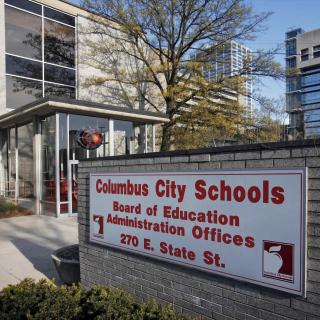Excerpts from remarks made by Dennis J. Kucinich Monday, April 24, 2017 to the Ohio Legislature, Columbus, Ohio
Privatization of public assets is a major issue in America, and, in the case of education, the federal government provides billions to privatizers in the charter industry… The privatization of public education in Ohio has resulted in a wasteful, inefficient, duplicate school system, with duplicate buildings and a duplicate transportation system, paid for by the same taxpayers who have paid for public education in the first place.
Charter schools, which are falsely labeled as public charter schools, not only represent the privatization of education but the rejection of popular democracy and its connection to the education of its citizenry.
In the past year I have been meeting with representatives of public education organizations, gathering information on the impact of educational privatization, that is, charter schools, on the public education system, its integrity, its financing and its stability...
Six hundred charters have been granted. Four hundred are left. Two hundred have closed due to ineptitude, low performance or corruption, but not before walking away with millions in tax dollars, originally intended by Ohioans to go to public schools.…
Flawed Funding Formula
Public schools in Ohio, which derive funding primarily from property taxes, were hit hard by the Park Investment Case (November 15, 1972) which resulted in commercial and industrial property being taxed at the same rate as residential property. This created a massive tax deficit in educational funding.
Corporate interests then used the Boards of Revision in each county to dramatically cut their property tax obligations on prime downtown land, further depriving public schools of revenue.
When the Ohio Lottery was passed, everyone remembers the money was supposed to go to supplement educational funding, but instead became a substitute for educational funding, giving state government more money to play with at the expense of schools. Tax abatements were introduced into Ohio, enabling corporations to take away from public schools millions of dollars in future tax revenues...
Keep in mind that the DeRolph court decision of 1997, and three subsequent court decisions, required the state to ensure a constitutional, thorough and efficient system of common schools. The financing of public education is a constitutional responsibility of state government.
The state legislature has a legal obligation to fund public education. It has failed.
Notwithstanding 1,000 new buildings, and some increase in funding, the educational funding system is still unconstitutional because the system is still over-reliant on property tax and the formula does not guarantee “a thorough and efficient system.” Ohio’s private charter schools have siphoned off over $10 billion from public educational funding in the past 18 years, with devastating effects on school districts and with profound impact on the lives of the 1.7 million public school students.
Local control is a hallmark of public education. But in this system of public finance for private charter schools there is no local control, just local money from local communities.
Let me explain how local property taxpayers in public school districts across the state end up subsidizing charter schools. This year the state will appropriate $9 billion for K-12 education. State education funds are then allocated to public school districts based on a complex formula. Out of the money which goes to each district, a deduction is made from the school district’s annual allocation to give a chunk of that public school district’s money to the charter schools. This creates a loss of anticipated state revenue for public schools.
When state revenue for public schools decreases because of money which goes to private for-profit charters, public school officials must make up the difference by asking local property taxpayers for more money. On the average, districts pay nearly twice as much for charter schools as they receive from the state on a per-pupil basis. At least 40 percent of the money which goes to charter schools comes from local property tax revenues, because local school districts have to make up the difference when the state deducts money for charters.
This is how private charter schools with the help of the legislature, are bleeding common public schools and forcing the diversion of millage voted to support public schools to cover the loss of tax revenue which goes to support private charters. An analysis of some of the larger school districts in the state shows staggering losses of public money to private, for-profit charters.
This year the Columbus City School District, will lose $150 million to charters. Dayton will lose $55 million. Toledo $73 million. Cincinnati $51 million. Akron $ 27 million. Cleveland, $132 million.
Youngstown, $20 million and Canton $8.6 million...
Under the current funding schemes for education in Ohio, it appears that public education is getting more money, but once you deduct the amount received by charter schools, public educational funding has actually declined.
And, if taxpayers are tapped out, cuts must be made in public school district programs to ensure that private, for profit charters have money to operate. This is outrageous...
A Scandal of Massive Proportions
In Ohio, private organizations set up a private charter schools, under a private charter school board, which can contract with a private-for-profit management company, spend funds privately, employ
personnel privately, secretly hire relatives; and engage in private rental contracts, inviting conflicts of interest. And, thanks to an Ohio Supreme Court ruling, charter schools can claim as their private property that which was purchased with public funds.
The Ohio Revised Code, falsely defines charters as “public” schools, but the National Labor Relations board has ruled that Ohio’s charters are private, for purposes of labor law. My question is, since truly everything is private about charter schools, shouldn’t their funding be private, and not public?
This Ohio private charter school system is a legal boondoggle, supported by billions in public funds with little transparency, accountability or government oversight. Variations in school funding district by district have resulted in funding caps. Charter schools are not. They operate as school districts, but are independent of school districts. They take funds from school districts, but they do not have a tax base or a geographical base.
Their base is not in the community, it is in the Ohio Legislature which deceptively labels the charters as “community” schools, while private charters schools contribute millions of dollars to political campaigns.
This corruption of the Ohio Legislature by charter schools is a scandal of massive proportions, dwarfing Crofters, Coingate and the Savings and Loan debacle because it represents a deliberate, destructive undermining of the public education of Ohio’s children.
Charters are a law unto themselves. They are exempt from over 150 state laws and regulations including those requiring transparency, accountability and adherence to conflict-of-interest laws. Some charter sponsors and for-profit management companies are not subject to state sunshine laws or open records requirements that cover almost every other entity which receives public funds. Could there by another system funded by state government, which is more susceptible to waste, fraud, abuse and profiteering?
How could such a secret, black box system which now commands over a billion dollars annually in state and public school district educational funds not be muddled in serious corruption? And, if there is no accountability, how can we entrust the future of Ohio’s children to such a system?
The egregious instances of financial misconduct by charters, which have been called to public attention by the State Auditor, only scratch the surface. Charter schools are a Wall Street growth industry. Bankers, investors and private equity funds favor charters because a guaranteed rate of return is underwritten
by the state government. For example, K-12, Inc, which operates the Ohio Virtual Academy, was put together by a junk bond dealer and a hedge fund banker. Private enterprise, using public funds for private profit…
How can we entrust the future of Ohio’s children to such a system?
The Electronic Classroom of Tomorrow (ECOT) raked in over a billion dollars in public funds in 15 years, over $100 million of which came from Ohio’s public school districts. Its founder, William Lager, contributing $1.6 million through 2014. White Hat Management’s on-line business required 409 school districts to pay $13.1 million in 2013-2014 alone, for a pathetic 22.8 percent graduation rate.
Innovation Ohio has reported that in the totality of its operations, White Hat Management has received well over a billion dollars since 1999. Its founder, David Brennan, has contributed $4.5 million to political campaigns through 2014. According to the Akron Beacon Journal (ABJ), together, these two aforementioned systems had a dropout rate 45 times higher than traditional public schools. According to the Columbus Dispatch, in a recent court case it was observed that ECOT claims “it is entitled to receive more than $100 million in taxpayer funds for the 2015-2916 school year without substantiating they actually provided a single minute of education to a single student.”
In 2015 the ABJ reported on an Education Writers Association conference which identified White Hat Management charters, the Ohio Virtual Academy and ECOT as among the worst performing operations.
No wonder an official of Ohio Department of Education responsible for charters tried to cover up this bad performance by eliminating on-line charters from an evaluation system. And now the charter industry wants the legislature to help it cover up the failures of its on-line “schools” with a cosmetic, arithmetic fix.
Know Your Charter, a product of the Ohio Charter School Accountability project, has reported that “more than half of the funds extracted from school districts go to charters demonstrating lower performance.” No surprise that the ABJ later reported that 210 Ohio charter schools opened, failed and closed.
The idea behind charter schools allegedly is to improve the educational status of inner-city children, and to let state and local tax dollars follow the student; they do, right into the pockets of the charter profiteers who have generally failed to improve educational outcomes in the inner city. Instead of addressing the symptoms of poor educational performance, and wrongly blaming public schools, state government would be better advised to address the deeper issues of poverty, hunger, unemployment, social
disorganization, lack of access to necessary medical, dental and mental health care, lack of access to information technology, all of which can mire children and their families in permanent conditions of deprivation.
There are social and economic reasons why average family income correlates closely with school district ratings. Charters spend millions of dollars on advertising and marketing for recruiting purposes, money which public schools are rightly forbidden to spend. Charters have been marked by high
employee turnover, personnel shifted to other schools, administrators constantly changed, and students shuttled from one school to another within the same charter system. This lack of stability is quite harmful to children for whom structure is critical to an emotional climate which fosters learning.
Eighty public school Boards of Education have invoiced the state of Ohio for the recovery of monies taken away from their public school district and given to charters. If charter schools wish to receive public funds they ought to have the permission of local school districts. Otherwise, these private entities should be privately funded...
It is time for Ohioans to demand that public education receives the full funding which DeRolph requires. Let us use our state and local resources to rebuild education in the public interest and to reclaim the sacred promise of government of the people, by the people and for the people.



